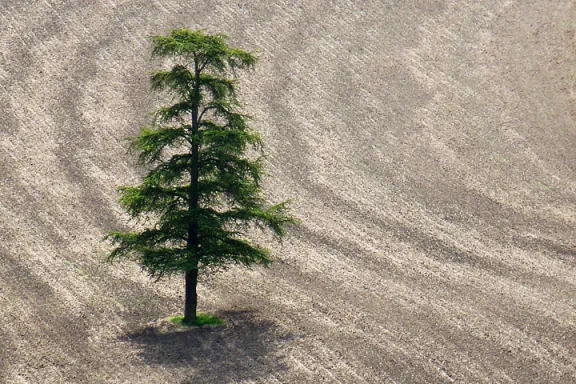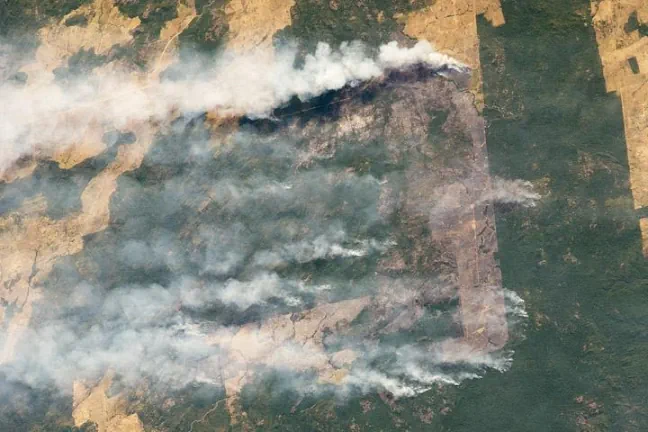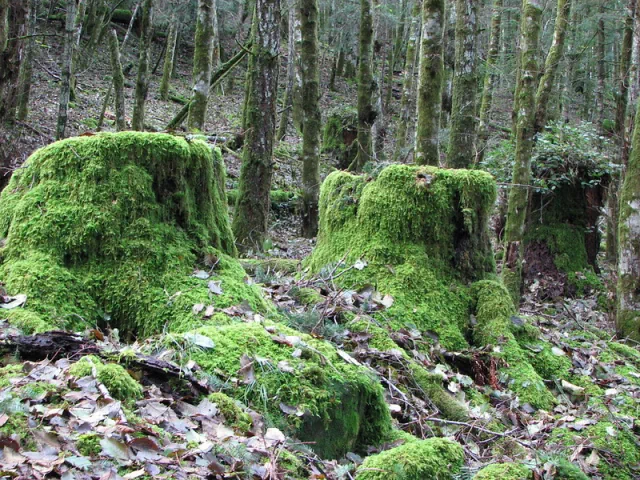
What Does Carbon Sink Mean?

Table of Contents
Carbon makes for an essential component of most organic matter, from deoxyribonucleic acid (DNA) to fossil fuels. However, too much carbon in the atmosphere is a threat to the Earth’s existence. Natural carbon sinks have been responsible for stabilizing the carbon level for years. From the early 1700s, human activity has increased the chemical in the oceans and atmosphere by over 30%. It was 275 parts per million (PPM) then, but today the value has risen to about 400 PPM.
The rising levels hinder the Earth from successfully reflecting the sun’s energy. So, it’s the leading cause of global warming, and we need carbon sinks to change this. Keep reading for more about carbon sinks and how we can use them to preserve our environment.
What is a Carbon Sink?
A carbon sink is an artificial or natural reservoir that helps to lower the amount of carbon dioxide in the atmosphere by accumulating and storing carbon chemical compounds for an indefinite duration.
How does this help us? As already indicated, the increase in carbon molecules in the atmosphere is responsible for the uncontrollable increase in global temperatures. Given the consequences, we need more public awareness.
Let’s take a brief look at the way global warming is impacting lives across the world. This should help you understand better why public awareness of the importance of carbon sinks should grow today better than ever before, with or without the all-important, famous Kyoto Protocol.
Ecosystems
Temperature rises, drought, weed and pest invasions, fire threats, water shortages, salt invasion, intense storm damage, and other variables stress ecosystems. The Great Barrier Reef in Australia is one of the significant natural icons that are already under threat due to global warming. It shows why we should make the land greener.

One green tree serving a large area
Species
Global warming has put one in six species at the risk of extinction. Species that cannot adapt perish. Those that attempt to move to safer locations get exposed to severe risks due to the high rate of habitat destruction.
Excessive Water Stress
Destructive floods, unpredictable rainfall patterns, and severe droughts are worsening the water crisis in different parts of the world.
Health Effects
According to the United Nations, global warming is causing infectious diseases, asthma and other respiratory diseases, and other dire health consequences.
Food Farming
Farmers face increasing difficulty today to cultivate crops and grace their livestock due to the changes in rainfall patterns, severe drought, flooding, and other similar weather-related events.
How Does the Kyoto Protocol Reduce Carbon Emissions?
The protocol is an international agreement that was designed to cut down carbon emissions. It requires industrialized nations to preserve and restore carbon sinks like forests and grasslands to achieve this goal. Moreover, it discourages the use of fire to clear forests.

Fire used to clear forested land
Let’s look at natural and artificial carbon sinks that can help you comply with the Kyoto Protocol. Remember, an environmentalist can decide to use the information shared here to do much more if they’re in a position.
Natural Carbon Sinks
There are several natural carbon sinks out there. In this section, we shall look at two main ones. Some of them are part of these ones. For example, we shall talk about some rocks in both instances.
Green Plants and Forests
Green plants contain a substance known as chlorophyll. The green substance’s primary job is to absorb sunlight. The plants need the energy and carbon dioxide to manufacture their food through photosynthesis.
The plants use radiation energy to convert carbon dioxide and water into glucose-like carbon sugar. Once the process is complete, they release oxygen into the atmosphere for various living organisms, including plants, to use. At night, the plants release carbon dioxide into the atmosphere.
Why do experts consider green plants and forests carbon sinks yet they release carbon dioxide? These plants feature in the top list of carbon sinks since the amount of carbon dioxide they absorb is significantly more than the amount they release.
Forests are better carbon sinks than many plants. They cover approximately 30% of the Earth’s surface and store close to 45% of the carbon that exists on land.
Scientists are still researching whether forests hold more or less carbon today than in the past. However, they have established that humans have removed the chemical from reliable sinks like buried fossil fuels, old-growth forests, and rocks into other storages that have a direct negative impact on the environment. For example, eight years after the British Columbian forest in the picture below was cut, it had not regained its former glory.

British Columbian forest 8 years after destruction - Flicker
Note: Forests store lots of carbon in their leaves, branches, and trunks for several decades. When people remove and replace them with plants such as pastures and croplands that store a smaller amount of carbon for a short duration, they expose the environment to the devastating effects of global warming. This is what happened in the above case.
Oceans
Oceans are some of the most important carbon sinks, and they are habitats for many living creatures. So, several biological processes, including photosynthesis, play a critical role in storing vast amounts of carbon safely.
Let’s see more on the biological processes below.
Biological Pump
The biological pump is sometimes referred to as the marine carbon pump. It moves carbon from the atmosphere into the deepest parts of the ocean. How does this happen? Microscopic marine algae known as phytoplankton, which are the base of various aquatic food webs in the ocean, play a central role.
These microscopic biotic organisms inhabit the ocean’s upper sunlit layer, making them a crucial part of the food chain. They provide food for several sea creatures in a balanced ecosystem. However, like any organisms in the food chain, phytoplankton can die without other organisms eating them. Whenever this happens, the second stage of the marine carbon pump begins. They start sinking.
As phytoplankton sink, they cluster together, which increases their weight. This helps to ensure the dead organisms sink much faster, reducing the possibility of other animals or organisms consuming them. Once the clusters hit the ocean’s floor, the third and final stage of the pump begins. The organisms and the carbon they contain remain stored on the floor for thousands of years. Overall, the biological pump protects the environment as it safely keeps the carbon away from the atmosphere.
Calcium Carbonate
When calcium dissolved in seawater combines with carbon dioxide, we get calcium carbonate. The chemical compound is a core ingredient of the materials that hard-bodied aquatic creatures like coral and oysters need to have well-built hard shells.
When the hard-bodied creatures die, they sink deep into the ocean. This way, they help to bury lots of carbon under the sea. As time passes by, the remains of the organisms form carbonate-rich layers. After millions of years, the addition of more carbonate layers produces much heat and pressure, causing the dead matter to turn into sedimentary rocks. This explains why many rocks are carbon sinks too.
Other Natural Carbon Sinks
Other common natural carbon sinks that you can depend on to reduce global warming include:
- Coral reefs
- Freshwater lakes and wetlands
- Agricultural lands
- Tropical rainforests
- Peat bogs
- Grasslands
- Coastal ecosystems like salt marshes, swamps, and seagrass beds.
Artificial Carbon Sinks
Humans have no significant control over some of the natural carbon sinks. For example, they may not influence the biological pump process or the creation of the hard shells on sea animals. This means that besides protecting natural carbon sinks, we can create artificial alternatives to take care of the additional carbon in the atmosphere.
Some of the common artificial carbon sinks we can consider creating and using to preserve our environment are:
- Landfills
- Carbon capture and storage technology
- Artificial sequestration
- Artificial trees that soak up carbon dioxide from the atmosphere
With the emergence of advanced technology, we expect this list to grow fast. Currently, we can use advanced carbon capture and storage processes to produce clean coal. As the name suggests, this involves capturing all the carbon dioxide that coal–powered plants produce and then sequestering it in the safest way possible. Artificial trees are also absorbing and storing carbon in large amounts in many cities.
Human Effort to Protect and Restore Carbon Sinks
Due to the revelation that a high amount of carbon in the atmosphere is responsible for the current climate changes and global warming, human beings have intensified efforts to protect and restore carbon sinks. However, more still needs to be done since the number of uninformed people who are interfering with these sinks in negative ways is still high.
Here are some of the core ways we can continue to protect and restore carbon sinks:
- Improving soil conservation
- Protecting and restoring wetlands and rivers
- Planting new forests (afforestation)
- Restoring destroyed forests (reforestation)
- Protecting open spaces such as grasslands
- Restoring seagrass habitat
- Recycling used products
- Reusing items
- Using water resources sparingly
Concluding on What Does Carbon Sink Mean
Before the current era of environmental degradation, the carbon cycle kept the Earth’s carbon concentration in the atmosphere balanced and steady for centuries. Human activity has interfered with the cycle, leading to severe social, economic, and health problems. Currently, humans release too much air into the atmosphere. They also destroy natural carbon sinks, which should absorb and store the excess carbon in a safe environment for thousands of years.
Perhaps, it’s time to invest more effort in public awareness. This is essential for bringing everyone on board. It could be the best way to help stop the widespread destruction of ecosystems across the world.